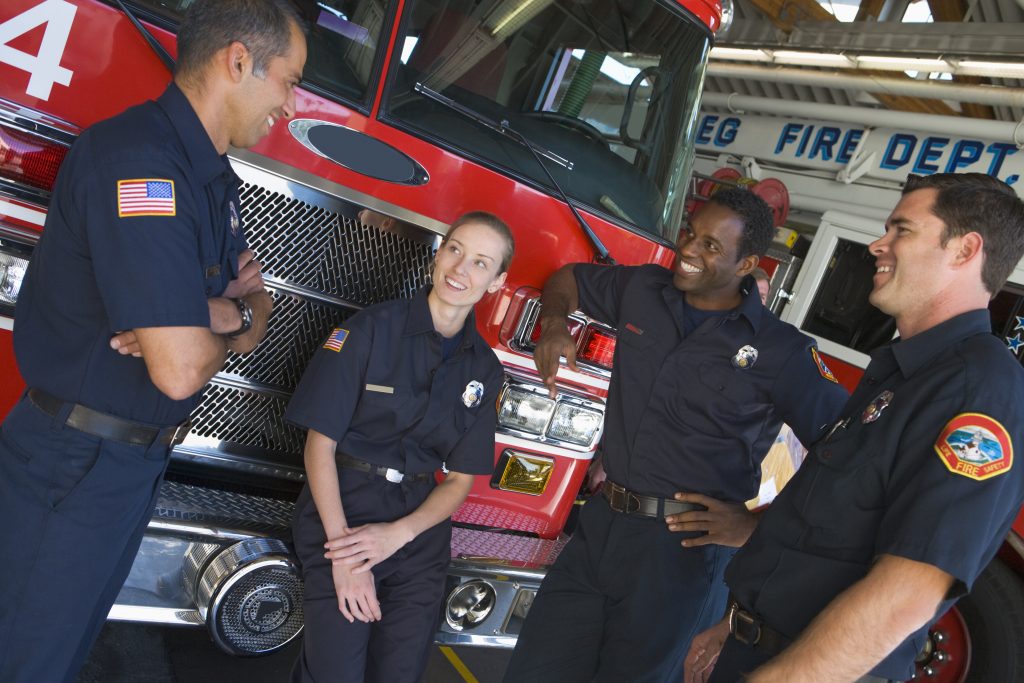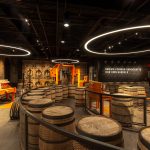6 Reasons Why Firehouses Pick ActiveCLEAN Lighting to Protect Firefighters

The job of a firefighter is simple: help fight off fires or aid with other types of 911 emergency responses—no matter where the danger may be.
“Think about it: We go into some the nastiest areas of the nastiest places we could be in,” says a longtime member of a county fire department in South Florida.
And, he adds, “we bring a lot of it back with us.”
Bacteria. Viruses. And not just the common cold or flu. Think MRSA and Hepatitis C.
“We’ve experienced many of these,” the firefighter said. “They all spread fast inside a fire station, from one person to another, just by laying on a bed, sitting on the couch or lifting equipment in the gym.”
It’s a formula that can cause what Firehouse magazine calls “sick building syndrome,” a set of symptoms that unfold when fire stations become breeding grounds for “contagions, including dangerous bacteria, viruses and toxic mold.”
The discussed South Florida county fire rescue department knows this all too well. Many of the firefighters here are proactive, using personal protective equipment (PPE) to spray disinfectants here and wipe there to lessen the threat.
But more is needed.
That’s why work is underway to install an innovative, UV-free LED lighting solution that kills viruses, bacteria, and other infectious microbes on any surface light can touch at 72 current firehouse locations and 10 scheduled for construction in the coming years.
Here are the top six reasons why this fire rescue department selected ActiveClean, Amerlux’s UV-free, antimicrobial lighting technology, to better protect those who protect us.
It’s Not UV Light
ActiveClean uses wavelengths of visible light between 400 and 420 nanometers, which are outside the UV mark of 380 or fewer nanometers.
“It doesn’t fall in the UV spectrum of light, but just outside of it, and that’s a big deal because that means it does not have the harmful effects of UV light,” the firefighter said.
UV light is intrinsically dangerous, and “brief” exposure at high intensities—“brief” meaning second to minutes, according to experts—can harm the cellular structure in humans. Potential eye problems include cataracts, issues with the cornea and temporary or permanent loss of vision. Skin problems include severe burns, premature aging, wrinkles and cancer.
“For this application, we were essentially looking for a new kind of light that deep-cleaned but wasn’t UV, and this provides just that,” the firefighter said, stressing that the non-UV label was one of the top reasons why ActiveClean was chosen for the project.
Internationally Approved to Use Around People 24/7
Here’s another primary reason UV-free, ActiveClean was chosen for this countywide firehouse job: 405-nanometer lighting meets the international standards set by the International Electrotechnical Commission for continuous and unrestricted use around people.
Meeting this standard will allow the fire stations to install Linea pendants with ActiveClean integration inside the stations’ gymnasiums and Grüv with ActiveClean integration throughout the dormitories and lounging areas—all areas that are used around the clock, day and night.
“This will allow us to control the viruses and bacteria better when guys are relaxing or sleeping without harming them,” the firefighter said. “We also have three shifts—A, B and C—each of which is here 24 hours. So, under this light, we know each shift can change without one passing something on to the other.”
Easily Kill Viruses, Bacteria at the Flip of a Switch
Independent testing demonstrates that 405-nanometer, antimicrobial lighting effectively combats bacteria, fungus, mildew and mold.
In fact, the lighting is proven to be 90% or more successful at fighting off bacteria in laboratory and controlled-room experiments. For instance, E. coli and MRSA—the latter of which plagued the discussed set of South Florida fire stations—showed a 90% or greater reduction in controlled laboratory testing after just 24 hours on hard surfaces.
What’s more, visible, 405-nanometer antimicrobial light inactivates and kills viruses, according to two recent studies.
The first, by Microchem Laboratory in Texas, revealed that the technology was effective against non-enveloped viruses, which are the most challenging class of viruses to kill. Examples of these viruses include the rhinovirus–aka the common cold–dysentery and polio.
Research showed that UV-free antimicrobial lighting on a non-enveloped virus showed a 99.985% reduction in a controlled laboratory setting—after just six hours on hard surfaces.
A separate pre-published study showed that the lights also inactivate enveloped viruses, such as those that cause influenza, hepatitis B and C, and SARS-CoV-2, the virus that causes COVID-19.
Antimicrobial Light Does Not Degrade Materials Like UV Light Does
According to the United States Plastic Corp., all types of UV can “cause a photochemical effect within the polymer structure, which can lead to degradation of some sort to the material.”
In other words, plastics are exceptionally susceptible to extreme degradation from UV light, the organization says. Rubber and fabric, too.
And much of the PPE firefighters use daily is made of these materials.
With too much UV exposure, plastic, rubber, fabric and other materials can fade in color, lose strength, become less flexible, crack and disintegrate, jeopardizing rescue missions and firefighters’ lives.
Alternatively, 405-nanometer lighting like the kind ActiveClean uses does not trigger the degradation of materials in plastics, gaskets and rubber-like traditional UV lighting does because it utilizes lighting outside the UV spectrum.
Two Superior Ways to Deep Clean
Particularly advantageous, the county firefighter said, was how ActiveClean provides two beautifully luminous ways to clean a space continuously.
The first is its Single Mode, which utilizes White Antimicrobial+Light™ to provide uninterrupted antimicrobial activity and crisp, comfortable white task and ambient lighting in 3000K or 4000K with 80 CRI during standard working hours.
The second is its Dual Mode, which pairs White Antimicrobial+Light™ with violet Enhanced Antimicrobial Light™, which combines a unique blend of precisely tuned colors to deliver extra antimicrobial dosage in a single LED light diode for enhanced cleaning when spaces are vacant. Dual mode is only available in fixtures with an aperture size of 2.5″ or greater.
Both lighting modes meet the standards for continuous use around people. However, some might find the violet hue of the Dual Mode visually uncomfortable. Thus, company officials recommend that this mode be used only when the space is vacant or when the occupants are sleeping.
“In these spaces—the gym, the shared area, the dormitories—we’ll use the second purplish mode to disinfect the area when the crew is sleeping or not there,” the firefighter said.
It’s the New, Innovative Approach to Mitigating Contamination 24/7
Here’s how Amerlux’s ActiveClean UV-free antimicrobial LEDs provide a continuous clean sweep from above: The lighting photo activates porphyrin molecules in microbial cells. When activated, they produce excessive Reactive Oxygen Species like singlet oxygen, hydrogen peroxide and hydroxyl groups.
Once excess Reactive Oxygen Species build up inside the cells, they become toxic, causing the destruction of cellular structures and ultimately leading to cell death.
Unlike microbial cells, the types of porphyrin molecules found in humans and other animals are contained in our gut and cannot be photoactivated by illumination between 400 and 420 nanometers. ActiveClean utilizes 405-nanometer lighting.
“(This lighting) doesn’t instantly kill microorganisms per se, but it keeps them dormant and unable to multiply,” the firefighter said. “This eventually kills off the viruses and bacteria, which is precisely what we’re trying to do here—in the best way imaginable.”
Want to learn more?
To learn more about how UV-free, antimicrobial lighting differs from traditional UV lighting and where to best apply it, read: “6 Different Environments Where Clean LED Technology Saved The Day.”

